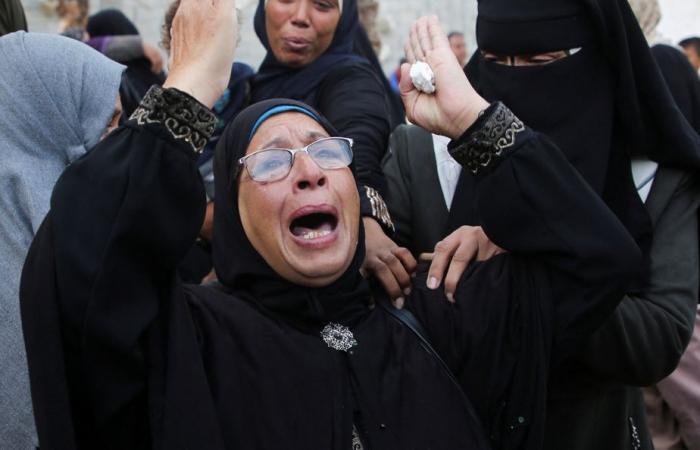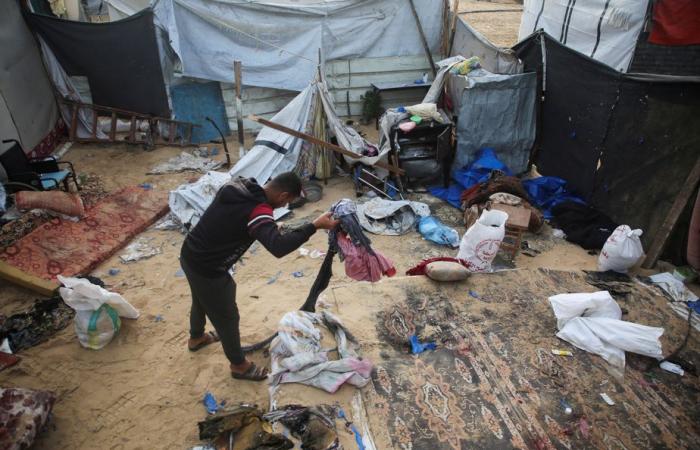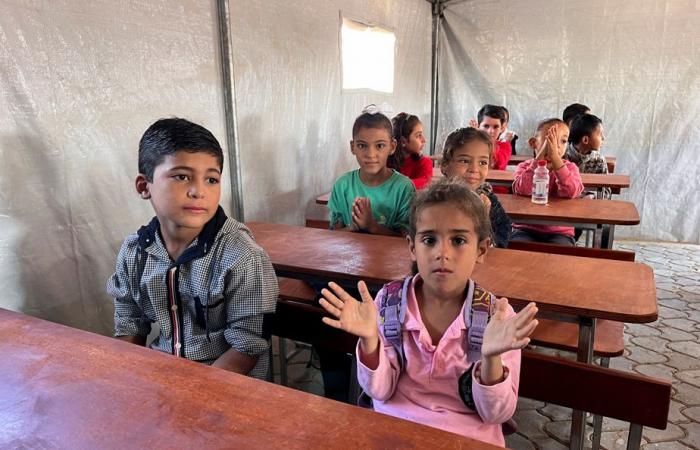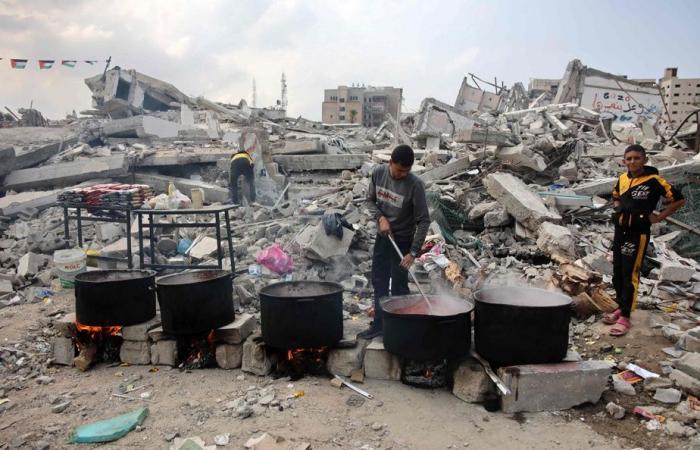(Gaza) Civil Defense in the Gaza Strip announced Saturday morning the death of 14 people, killed in two Israeli strikes, one “on a school”, the other on a “tent camp for displaced people”.
Posted at 8:53 a.m.
Engaged against the Palestinian Sunni Islamist movement Hamas and other armed groups in the Gaza Strip, as well as against the Lebanese Shiite Islamist movement Hezbollah in Lebanon, the Israeli army announced that it had struck “more than 50 people” in the last 24 hours. terrorist targets in Lebanon and the Gaza Strip.
Fourteen Palestinians were killed overnight and Saturday morning “during two raids targeting a school in Gaza City”, in the north, and a “tent camp for displaced people in Khan Younes”, in the south of the Gaza Strip, declared Mahmoud Bassal, spokesperson for Civil Defense for this small Palestinian territory devastated by more than a year of war.
A missile strike on the Fahad al-Sabah school, an establishment in the Al-Touffah neighborhood of Gaza City transformed into an emergency accommodation center, left “five people dead, including children, and 22 injured,” a statement said. specified Mr. Bassal in a press release.
The other Israeli air strike “on tents of displaced people in Khan Younes” left “9 dead and 11 injured,” he added.
PHOTO HATEM KHALED, REUTERS
A man inspects the site of an Israeli strike on a tent sheltering displaced people on November 9, 2024 in Khan Younes, in the south of the Gaza Strip.
The war was sparked by the surprise attack launched on October 7, 2023 by Hamas. This attack resulted in the death of 1,206 people on the Israeli side, the majority civilians, according to an AFP count based on official figures and including hostages who died or were killed in captivity in the Gaza Strip.
“Proportionality, distinction, precaution”
More than 43,550 Palestinians have been killed in the Israeli military campaign of retaliation on the Gaza Strip, mostly civilians, according to data from the Hamas government’s Health Ministry for Gaza, deemed reliable by the UN.
In October, “at least 64 attacks on schools – almost two per day – were recorded in the Gaza Strip,” UNICEF said on Friday.
Schools in Gaza “essentially serve as shelters for displaced children and families,” notes UNICEF, recalling that “under international humanitarian law, schools are protected spaces.”

PHOTO HUSSAM AL-MASRI, REUTERS
Palestinian children attend a class in a makeshift school set up to help them catch up on schoolwork, in the Al-Maswasi area where displaced people are sheltering, on October 31, 2024 in Khan Younes, in the southern Gaza Strip.
Since the start of the war, nevertheless deplores the UN agency, “more than 95% of schools have been destroyed in part or in full”.
The Israeli army regularly accuses fighters of Hamas or other Palestinian armed groups of “systematically violating international law [en] using residents as human shields.” It ensures that it strives to “minimize damage to non-combatants before attacks”.
On Friday, the UN High Commissioner for Human Rights, Volker Türk, estimated that “the unprecedented level of civilian deaths and injuries” observed in Gaza was “a direct consequence of the failure to respect the fundamental principles of international humanitarian law.
Even if Palestinian armed groups use civilians as human shields, this does not exempt the Israeli army from respecting the foundations of international humanitarian law, which are “the principles of proportionality, distinction and precaution,” noted in July the UN Human Rights Office after a series of Israeli strikes on schools in Gaza leaving dozens dead.
Northern Gaza Strip on brink of famine, UN warns

PHOTO OMAR AL-QATTAA, AGENCE FRANCE-PRESSE
A man prepares meals to distribute to displaced Palestinians in front of a razed building in Gaza City, November 2, 2024.
Famine threatens in the north of the Gaza Strip, in a context of intensification of Israeli army operations and an almost total cessation of food aid, warns a UN report on Saturday.
This report from the Integrated Food Security Classification Framework (IPC) warns of “an imminent and substantial likelihood of famine, due to the rapidly deteriorating situation in the Gaza Strip.”
“The famine thresholds may have already been crossed or will be in the near future,” this report estimates.
On October 17, a previous IPC report, the result of the expert work of NGOs and UN agencies including that for Food and Agriculture (FAO) based in Rome, estimated that some 345,000 Gazans would face hunger at a “catastrophic” level between November and April 2025, or 16% of the population.
This assessment corresponds to the highest level of the Integrated Food Security Classification Framework, level 5 (3: crisis, 4: emergency, 5: disaster).
However, since then, the situation has deteriorated in the north of the Gaza Strip with the collapse of food systems, a drop in humanitarian aid and a critical situation in terms of water, sanitation and hygiene, underlines the report.
“We can therefore estimate that hunger, malnutrition and excess mortality due to malnutrition and diseases are increasing rapidly,” he says.









